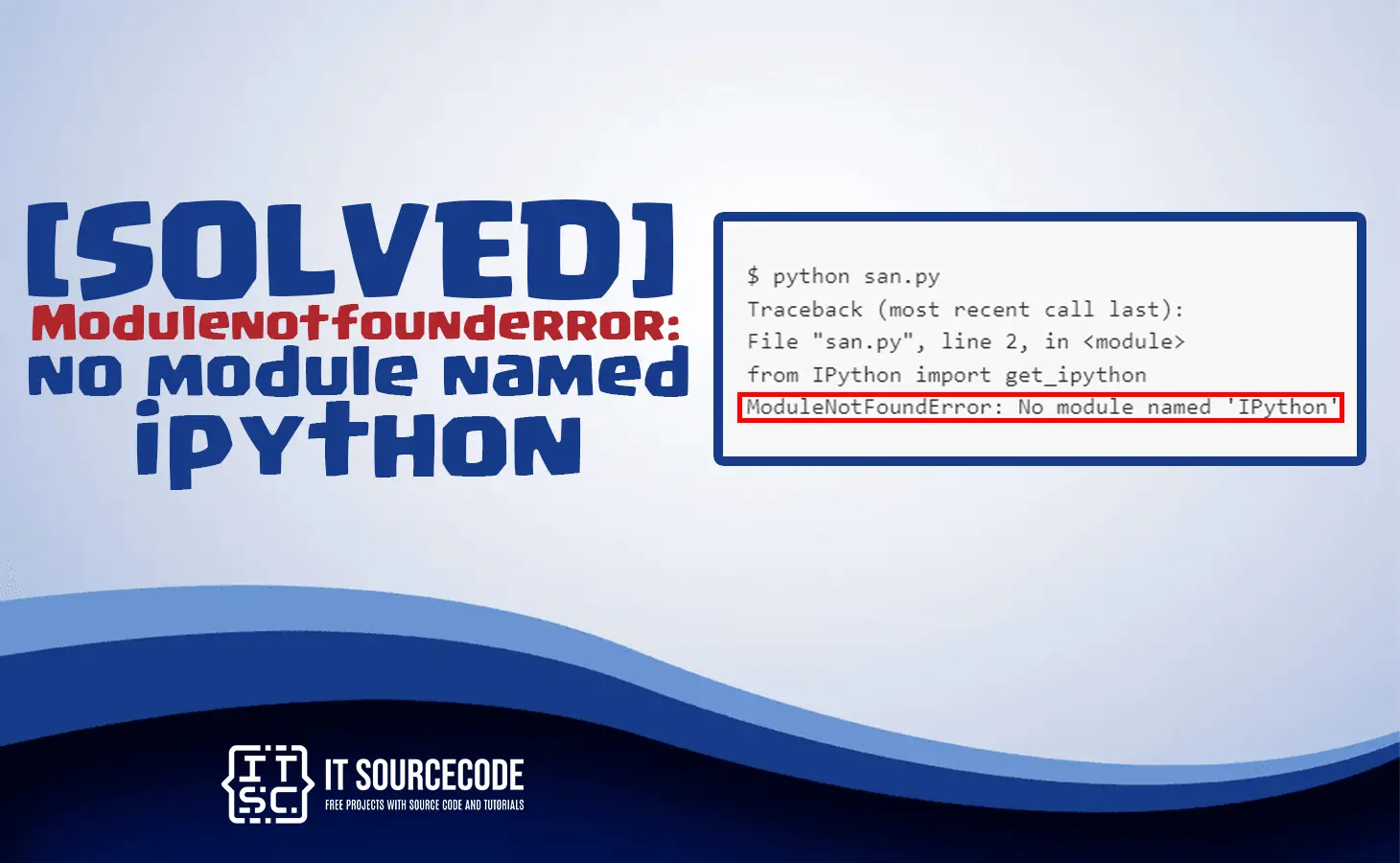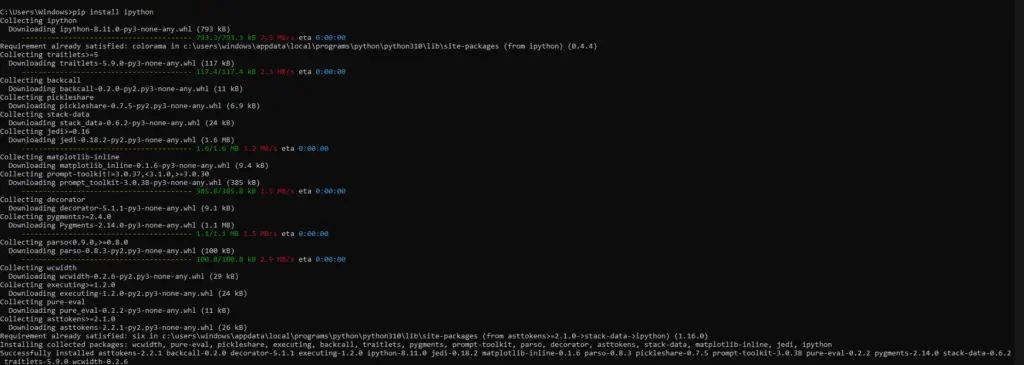In this article, we will look at how to fix Modulenotfounderror no module named python.
As well as what causes it and a brief discussion of this error.
Modulenotfounderror no module named ipython error can be upsetting.
However, it is a common error when working with a Python project especially if you’re new to Python and ipython.
What is ipython?
IPython is an interactive command-line shell for Python that provides a more powerful and flexible alternative to the standard Python interpreter.
It was designed with data analysis and scientific computing in mind and provides features like tab completion, object introspection, and syntax highlighting.
IPython can be used as a standalone application or as an interactive shell within an IDE like Jupyter Notebook or Spyder.
It also supports the execution of shell commands, making it a useful tool for system administration tasks.
What is Modulenotfounderror: no module named ipython?
The Modulenotfounderror: no module named ipython error occurs in Python when the interpreter is unable to find the IPython module.
This error can occur when trying to run Python code that uses IPython, or when trying to start an IPython session from the command line.
Additionally, the error means that the IPython module is not installed or is not located in the correct location.
This error can occur due to a variety of causes. Some of the common causes are:
- The IPython module is not installed.
- The pip package manager is outdated.
- The PYTHONPATH environment variable is not set correctly.
- There is a conflict between different versions of Python.
- The Python installation is corrupt.
- In the next section, we will discuss step-by-step solutions to fix this error
How to solve Modulenotfounderror: no module named ipython
Here are some solutions you can consider to fix the error Modulenotfounderror: no module named ‘ipython‘.
- Install ipython module.
The first and most obvious solution is to install the IPython module.
You can install it using the pip package manager by running the following command in your terminal or command prompt:
pip install ipython
This command will download and install the latest version of the IPython module.
If you are using anaconda
conda install -c anaconda ipython
If you are using Linux, use this command:
sudo pip3 install IPython - Import ipython module
Make sure to import the module name correctly. The correct way to import the module is using the following command:
import IPython
Things to keep in mind: ‘I’ and ‘P’ in IPython are uppercase. - Check if the package installed
You can check if you have the ipython package installed by running the pip show ipython command.
This is the command to check if ipython is installed.
pip3 show ipython
Use this, if you don’t have pip set up in PATH
python3 -m pip show ipython
Thepip show ipythoncommand will either state that the package is not installed or show a bunch of information about the package, including the location where the package is installed. - Check python version
If you have multiple Python versions installed on your system, make sure you are installing ipython for the correct version.
To check the python version use the following command:
python –version
- Update pip package manager
If you already have IPython installed but are still getting the “Modulenotfounderror: no module named ipython” error, it might be because your pip package manager is outdated.
You can upgrade pip using the following command:
pip install --upgrade pip
This will upgrade your pip package manager to the latest version.
Using a virtual environment
If you are working on a project that requires a specific version of IPython, you can use a virtual environment to isolate your project’s dependencies.
A virtual environment is a self-contained Python environment that allows you to install packages without affecting the system-wide installation.
Here’s how you can create and activate a virtual environment:
- Open your terminal or command prompt.
- Run the following command to install the virtualenv package:
- pip install virtualenv
- Navigate to your project directory.
- Create a virtual environment by running the following command:
- virtualenv env
- This will create a new directory called env that contains the virtual environment.
- Activate the virtual environment by running the following command:
- source env/bin/activate
- Install the required version of IPython using pip:
- pip install ipython==<version>
- Replace
<version>with the required version of IPython. - Try running your Python code again.
That’s it, we are almost done fixing this error.
Common mistakes to avoid Modulenotfounderror: no module named ipython
When trying to fix the Modulenotfounderror: no module named ipython error, it’s important to avoid some common mistakes that can make the problem worse.
Here are some mistakes to avoid:
- Using sudo with pip
- Using sudo with pip can cause permission issues and might install packages in the system-wide installation instead of the virtual environment.
- Using different Python versions
- Make sure that you are using the same version of Python that you used to install IPython.
- Misspelling the module name
- Make sure that you are spelling the module name correctly.
- Using an outdated version of Python
- Make sure that you are using a recent version of Python. Using an outdated version of Python can cause compatibility issues.
Conclusion
The Modulenotfounderror: no module named ipython error can be frustrating, but it’s a common issue that can be easily fixed. In this article, we have discussed different solutions to fix the error.
You can try these solutions one by one until the error is fixed. It’s important to remember to avoid common mistakes and to choose the solution that best suits your needs.
We hope that this article has provided you with the information you need to fix this error and continue working with Python packages.
If you are finding solutions to some errors you’re encountering we also have Modulenotfounderror: no module named ‘awscli’.




